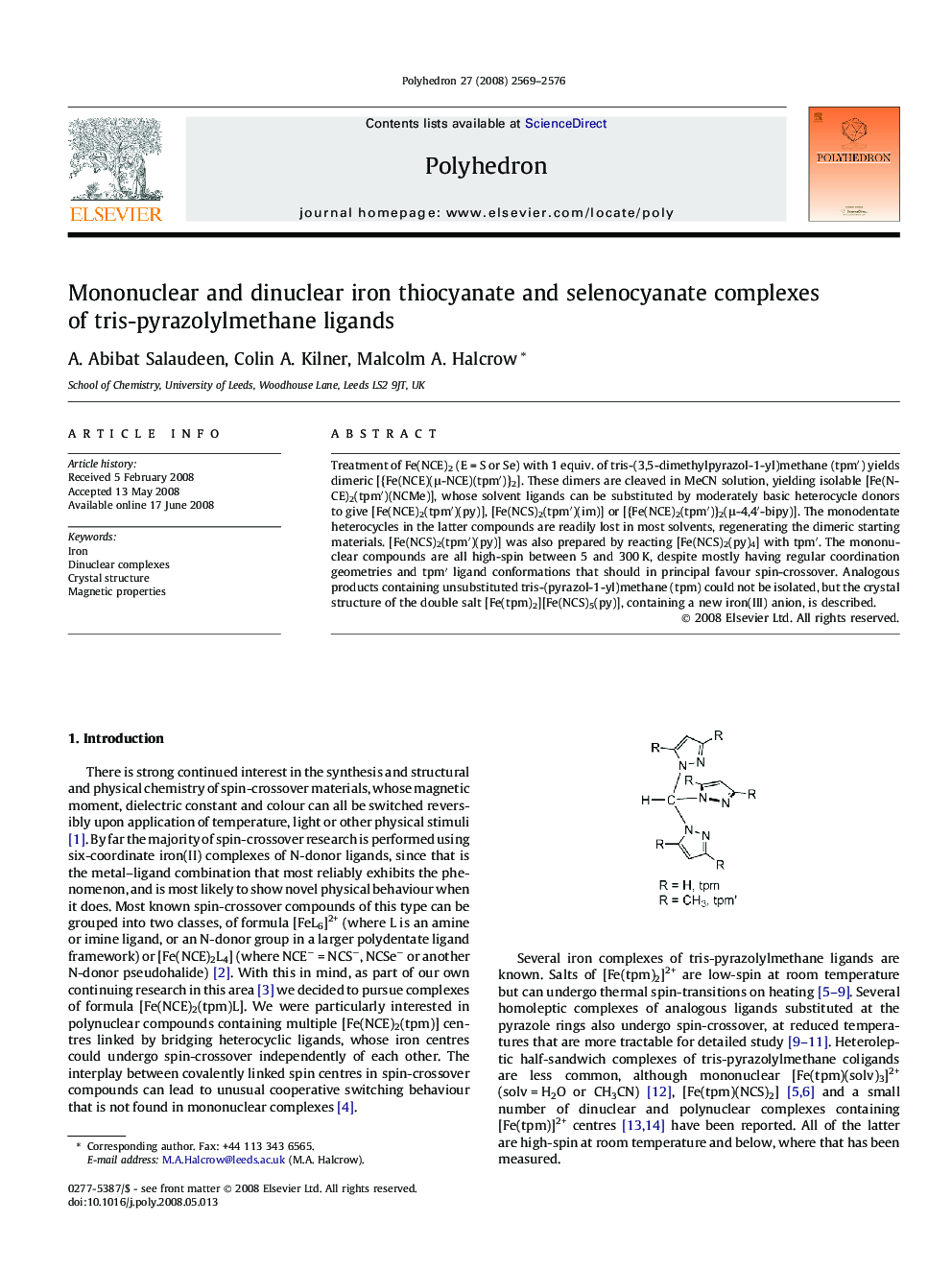| Article ID | Journal | Published Year | Pages | File Type |
|---|---|---|---|---|
| 1339257 | Polyhedron | 2008 | 8 Pages |
Treatment of Fe(NCE)2 (E = S or Se) with 1 equiv. of tris-(3,5-dimethylpyrazol-1-yl)methane (tpm′) yields dimeric [{Fe(NCE)(μ-NCE)(tpm′)}2]. These dimers are cleaved in MeCN solution, yielding isolable [Fe(NCE)2(tpm′)(NCMe)], whose solvent ligands can be substituted by moderately basic heterocycle donors to give [Fe(NCE)2(tpm′)(py)], [Fe(NCS)2(tpm′)(im)] or [{Fe(NCE)2(tpm′)}2(μ-4,4′-bipy)]. The monodentate heterocycles in the latter compounds are readily lost in most solvents, regenerating the dimeric starting materials. [Fe(NCS)2(tpm′)(py)] was also prepared by reacting [Fe(NCS)2(py)4] with tpm′. The mononuclear compounds are all high-spin between 5 and 300 K, despite mostly having regular coordination geometries and tpm′ ligand conformations that should in principal favour spin-crossover. Analogous products containing unsubstituted tris-(pyrazol-1-yl)methane (tpm) could not be isolated, but the crystal structure of the double salt [Fe(tpm)2][Fe(NCS)5(py)], containing a new iron(III) anion, is described.
Graphical abstractReaction of [{Fe(NCE)(μ-NCE)(tpm′)}2] (E = S, Se) with the appropriate monodentate base yields [Fe(NCE)2(tpm′)L] (L = NCCH3, pyridine, imidazole) or [{Fe(NCE)2(tpm′)}2(μ-4,4′-bipy)]. The iron centres in these products are high-spin between 5 and 300 K.Figure optionsDownload full-size imageDownload as PowerPoint slide
